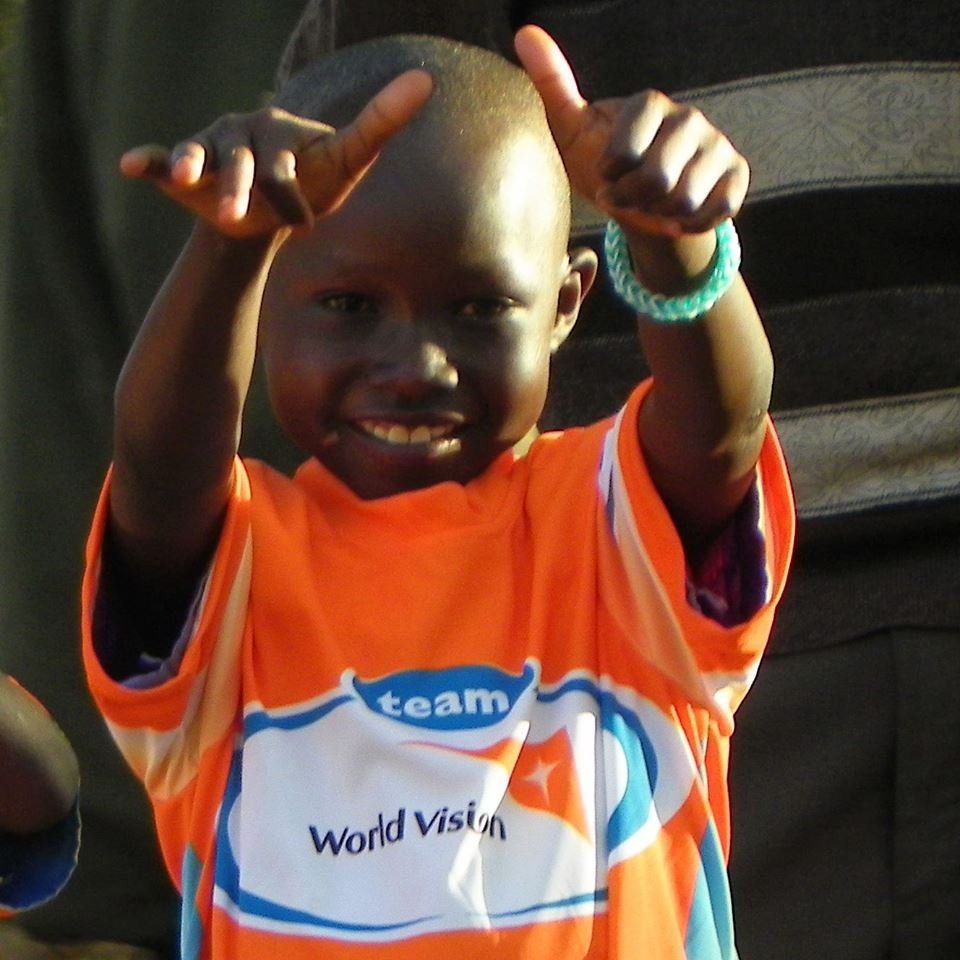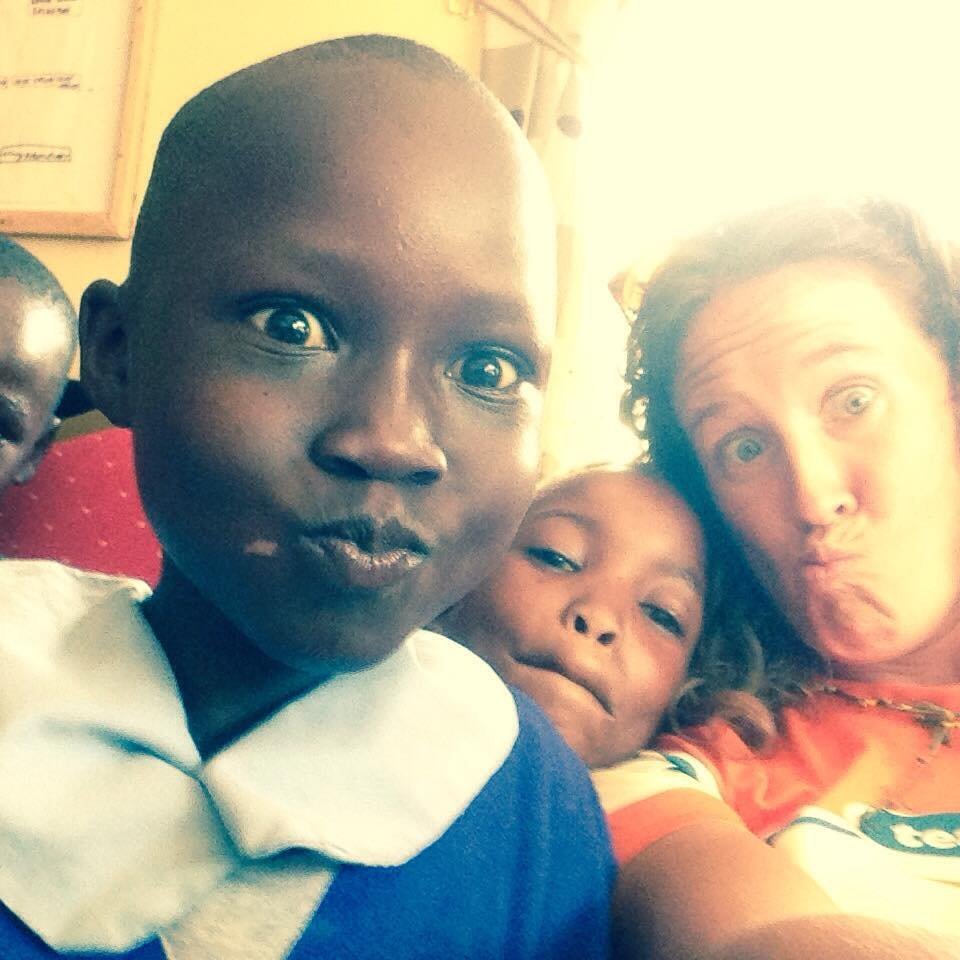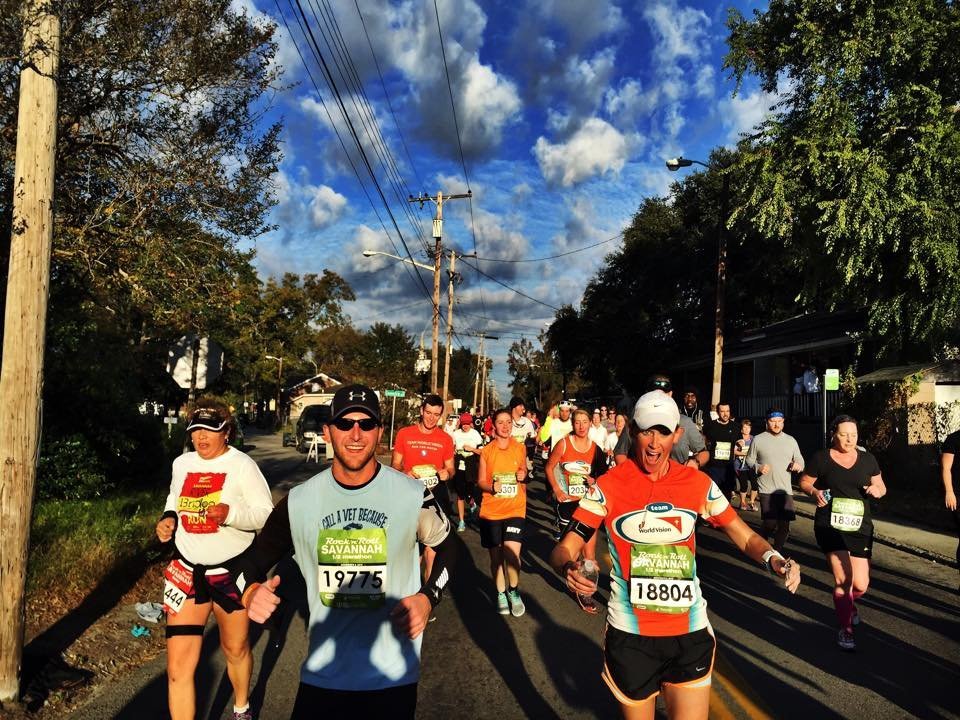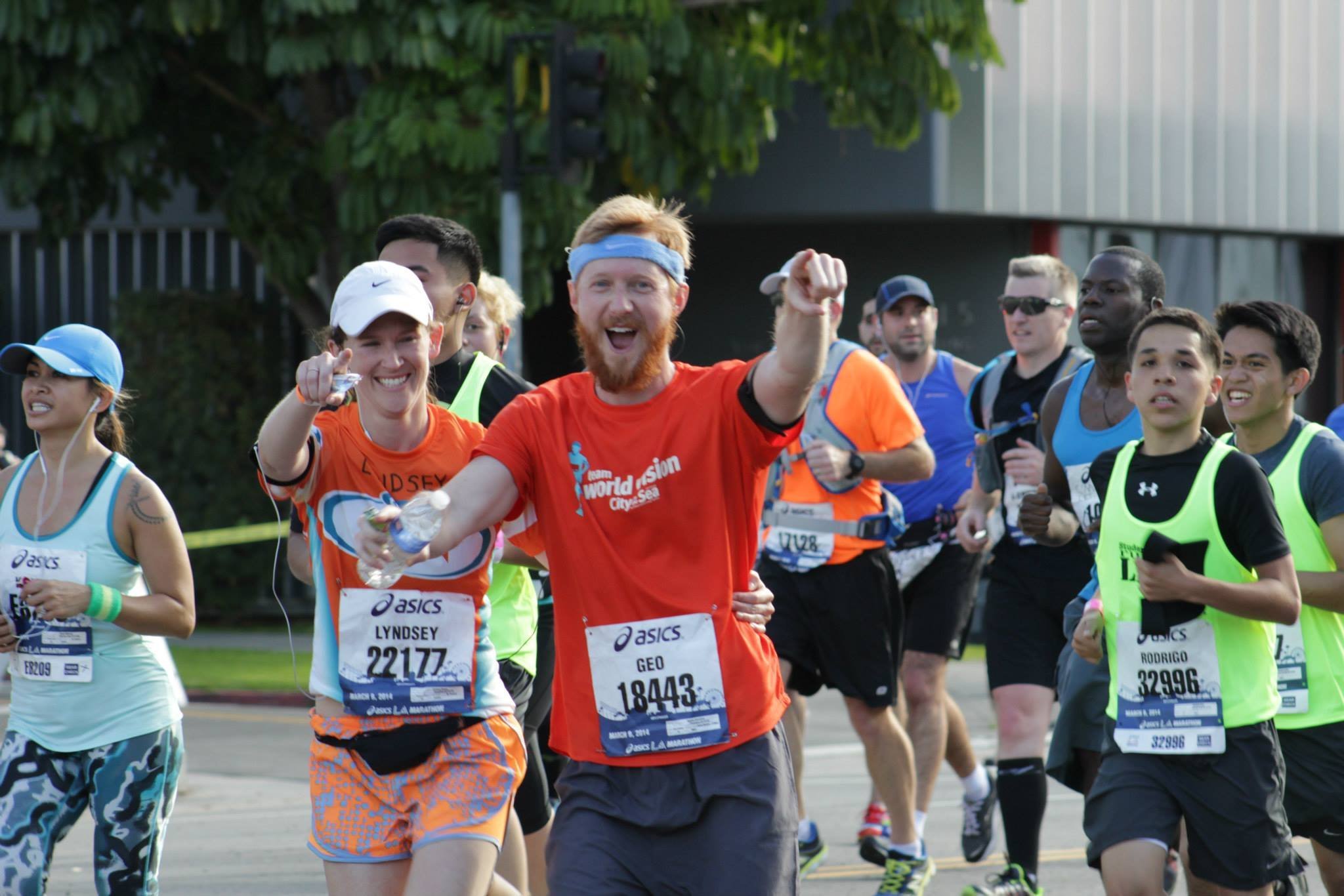Running My First Marathon for Team World Vision - This Will Not Kill Me…
I am not a runner. I have sports-induced asthma and couldn't run 2 miles last year when I started training for the Hollywood Half Marathon. It was something on my bucket list and I cried when I finished that race. A full marathon was always in the back of my "someday" mind. Not this year. Not when I haven't run SINCE the half marathon 7 month ago. And then I heard about Team World Vision. I realized it's not about speed, being able to run without stopping, or even the race. It wasn't about me. So I did it! I signed up for the daunting 26.2 miles of the L.A. Marathon, and here's why...
For my latest episode, I interviewed Lyndsey Deane, the West Coast Events Director of Team World Vision about the organization, how it works, who it benefits, and the L.A. Marathon itself.
M: Thank you for being on the show. Tell us a little bit about Team World Vision.
L: So Team World Vision is a group of folks that ban together to run half marathons and marathons for clean water. We’re basically getting in shape to take on miles that kids are walking for water that’s killing them. So, as we’ve talked about, kids at 5 start walking for their family on average 6 miles a day, 6-8 hours a day for water we wouldn’t wash our cars with. So with that being the #1 cause of preventable death on the planet, and heart disease being the #1 cause of death for Americans, if we take on these miles that are killing these kids we get community, we get in shape, we’re having fun, we’re accomplishing human feats, and then we’re taking away the miles that are actually burdening them.
M: So then how does TWV work? When someone signs up and wants to run a race, what does that entail? Where does the money go? How does it get the water to the kids?
L: That’s a fantastic question. So when you join TWV you join the team for free and that gets you all your training, your fundraising resources, you get an online platform like you have; and then when a friend comes on, reads your story and sees your picture they can actually click donate and then those funds are actionable immediately. So if you were get a $50 donation, that’s clean water that lasts for one person.
M: So then how does the water last? I know I’ve heard of organizations that bring water to the families, but how do you say $50 takes care of one kid for the rest of his life?
L: When I was in Kenya in November I was completely floored by the commitment of the communities. They’re banning together, shoulder to shoulder, eye to eye, with World Vision workers, some of the best engineers in the country and they’re learning about gravity fed pipeline, solar powered panels, rock catchments; they have roofs that actually filter rainwater into filtration systems so during the dry season they’ll have water that lasts through that period of time. What they did took water from 10% to 80% in that area. So, we figure the issue is complex, so we’ve got to have answers that are complex, comprehensive, and that are going to last that are sustainable. So World Visions water projects actually last a generation and they’re the most sustainable on the planet.
M: Wow. Does TWV have employees that go over there and work? Do you just send the money over to the people already working over there? Who does it fund?
L: You have such great questions. World Vision works in over 100 countries. So where we work in Africa, folks on the ground are indigenous to the communities and they are working shoulder to shoulder with their own people. Folks are working in their countries, with their people, for sustainability.
M: So then it not only gets water to the families but it also keeps jobs there in Africa as well. That’s great!
L: Absolutely. Last year we funded all of the available water projects in Congo. Which means, basically, there are full-scale construction projects happening right now. Men and women are being trained, they’re working, kids are starting to go to school, and actually an economy is being built while water is coming into the area.
M: So you do half marathons and marathons around the U.S. How many do you guys do?
L: We’re actually in over 40 events this year and we’ve expanded from half marathons, to marathons, to triathlons.M: NO! Don’t convince me on that!!!
L: I’m not there yet either.
M: Ok, so you got me to sign up for the L.A. Marathon. Tell us a little about that and TWV in L.A.
L: TWV L.A. is phenomenal. I ran my first L.A. Marathon last year. You start at Dodger Stadium. We had a loge so our whole pep rally was right down near the field. You run out of the stadium, down into downtown, through Chinatown, back up to Hollywood, you run past the Pantages theatre, over to Santa Monica and that’s where the 13-mile mark is. (Sees my face of horror) Yeah, that’s your halfway point!
M: THAT’S DAUNTING!
L: Yeah. But when I hit mile 13 last year I just lost it. We call it runmotional, when you’re out there, you’re breaking down, thinking about life and at 13, we ran the charity relay exchange zone last year. So, for a mile all you could see was orange. People’s families, people’s communities, coming out hugging, crying, high-fiving, giving you orange slices, it was amazing. And from 13, then you’re hitting Beverly Hills all the way out to the ocean and you end right near Santa Monica pier. So you get to see it all.
M: Tell us a little bit about TWV in L.A. What kind of impact has it had through the city, has it expanded?
L: Yes, absolutely. So three years ago was the first time that we had a team at the Los Angeles Marathon. We had 132 people. 132. Last year, we had 819; and those 819 raised enough funds to provide water to over 15, 000 people.
M: Holy Cow! Is that every city? Are you seeing a growth all around?
L: Yeah. It’s contagious. You’ve got folks that understand the mission and get that a 5-year-old shouldn’t be walking for water. And that, actually, the route to a traditional water source, is the #1 source of human trafficking on the planet. So not only is this an issue of diarrhea or actual disease, but it’s an issue of safety. So when people go out and take on these miles, the mortality rate is cut in half for children. School attendance doubles, over doubles in some areas, and you’re actually protecting women and children from being kidnapped, raped, from child prostitution, from even child slavery and being turned into a soldier. So when you’re seeing your sister or your friend get in shape, conquer these things they never could, that’s inspiring; but then to learn about why they’re doing it, it’s hard to say no.
M: What about for people who aren’t runners? If somebody wants to get involved, can they do that without taking on a half marathon or marathon?
L: Oh, absolutely. You can support people individually. You can walk. We have people of all ages. But then for folks that just they can’t do it or for one reason or another it’s just not going to happen, coming out on a Saturday morning, being part of a community, cheering people on, water stations, even getting your corporation involved to support financially, there are a lot of ways that you can be involved.
M: Well it sounds like an amazing organization, it got me to sign up for the L.A. marathon. So thank you Lyndsey for getting me to sign up and for coming on the show and talking about it.
L: Absolutely, it’s great to be here and I can’t wait to see you cross that finish line.
M: Yeah, me either!
I’m currently just past the halfway point of my training and for a non-runner like me, it’s tough! Getting out of bed at 5 a.m. to get a 3 hour run in before work is tough. Every part of my body hurting and battling some injury at one point or another is tough. But I don’t fear for my life hitting the streets and after my run I can go home and guzzle down as much water as I want and not question how sick that might make me. So I’m pushing my body past its limits to conquer 26.2 miles in March because this will not kill me, but doing nothing, might kill them.To learn more go to www.teamworldvision.org






